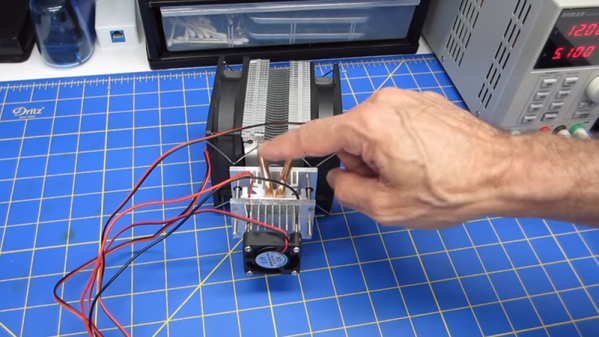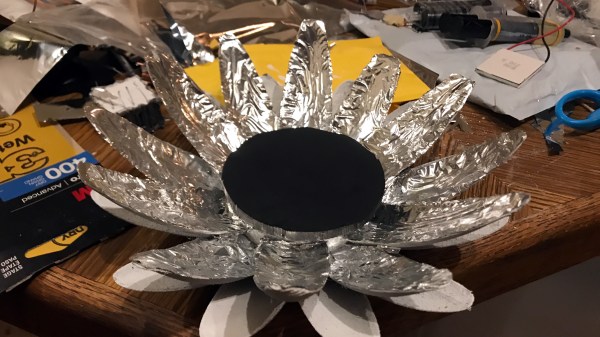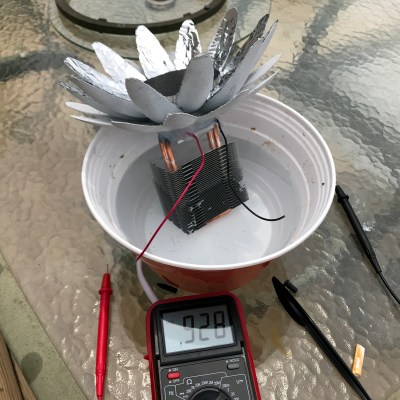Thermoelectric devices are curious things, capable of generating electricity via the Seebeck effect from a temperature differential across themselves. The Seebeck effect does not produce a huge potential difference, but when employed properly, it can have some useful applications. [MJKZZ] decided to apply the technology to build a reading light, powered by a hot cup of coffee.
The build is based around four Peltier modules, 40mm x 40mm in size, sandwiched between a pair of copper sheets. The modules are wired in series to create a greater output voltage, and an aluminium heatsink is fitted to one side to create a higher temperature differential. The set-up produces just 230 mV from human body temperature, but over 8 volts when warmed directly with a heat gun. Boiling water in a mug produces a more restrained 2.1V output.
On its own, this voltage is a little weak to do anything useful. Thus, the electricity from the Peltier modules is fed through a joule thief, which helps step up the voltage to a more useful range to run an LED. With a mug of coffee on the copper plate, the assembly isn’t quite able to light the LED enough to allow the user to read comfortably. However, it flickers into life just a touch, demonstrating the basic concepts in action.
While it’s not the most practical build, and it’s likely to cool your coffee faster than you’d like, it’s a fun project that serves to educate about the mechanics of the Seebeck effect and using Peltier devices to generate it. Another fun application is to use them in a cloud chamber. Video after the break.
Continue reading “Reading Light Not Quite Powered By Your Favorite Hot Beverage”


















